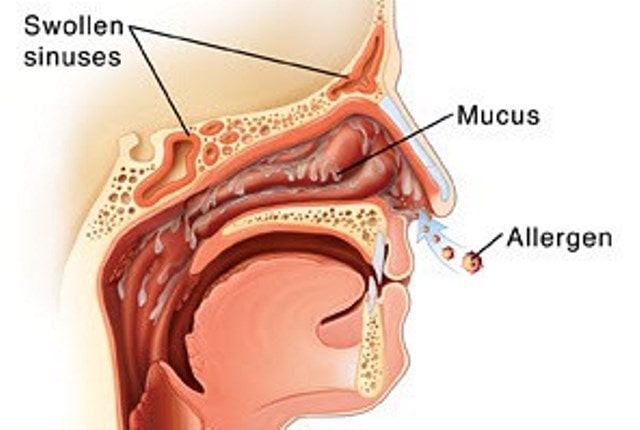Nose hair serves important biological purposes. Continue reading to learn about them. You will also discover the man who holds the world record for the longest nose hair pull. Lastly, you will learn what causes white nasal hair and how you can get rid of them.
Purpose of Nose Hair

Nose hair, or nasal hair if you like, are not just as good as keeping the hair trimmer manufacturing companies running; they serve important purposes in the body. The hair strands we see in the nose are just a mere portion of the hair shaft which extends through to the epidermis and into the dermis and hypodermis and eventually into the hair follicle.
As with other hair fibers present on your body, hairs in your nose creates a tough but flexible barrier against external environments.
To start with, these hairs severs the purpose of protecting the epidermal layer from small mechanical abrasions as well as the effects of direct sunlight.
Nose hair also acts as a defense mechanism against harmful environmental pathogens and pollutants.
When a person inhales, he or she can potentially inhale small debris (e.g. dust and soot) and pathogens (e.g. bacteria, viruses, spores and fungi) contained along with the oxygen needed by the body. The hair in each of the two nostrils however help to filter away most of the particles in a sticky layer of mucus. The hairs in the nose thus acts like the air filter that you possibly have in your house.
Because of the hairs in the nose, these unwanted particles don’t get to the respiratory tract. Instead they remain trapped in the in the nose until they get blown off into your handkerchief or by sneezing. The mucus in your nose aids the nose hair in trapping such particles.
By keeping solid debris and pathogens present in the air from reaching your respiratory tract, hairs in the nose protect you from airborne diseases. If for whatever reason such pathogens and solid debris get past the nasal hair and into the respiratory tract, they are expelled through sneezing or swallowed.
Given the beneficial purpose played by hairs in your nose, scientists advise against complete removal of nasal hair as part of personal grooming. In fact scientists say that denser hair in your nose is more beneficial in preventing respiratory infections.
For example, a study conducted by scientists at Hacettepe University found that people with sparse nasal hairs are almost three times more likely to get asthma that those with more hairy nostrils. People with completely trimmed nasal hair are also more prone to sinusitis and other respiratory infections.
Nose hair also serves important ancillary purposes. It increases the surface area of the skin which helps to increase the rate of evaporation of sweat. The nerves surrounding the nasal hair follicles also communicate important information about the external environment.
Hairs in the nose also helps to add extra humidity to the air before it reaches the rest of the respiratory system. As the air passes through the nostrils, it passes over the nasal hair and mucus which provides moisture. The air thus gets more moisture which is required in the larynx and lungs.
Nasal hair also heats up the cold air inhaled and removes excess heat from the air exhaled from the lungs. This way it helps to conserve heat energy.

The hair in the nose work alongside small hair-like strands called cilia which move back and forth inside the nose. Cilia sweeps dust particles and other potentially harmful debris towards the throat where they collect to form a small glob of mucus that either gets coughed out or swallowed. In case the glob gets swallowed, stomach acids act on it, eliminating most of the harmful particles.
Longest Nose Hair or Long
Hair sin the nose, as with any other body hair, keeps growing. After some times it might start being visible from the outside or protrude from your nose. Although they serves important purposes as we have discussed, having too long or an excess of nasal hair is considered unsightly.
Trimming overgrown hairs in your nose is considered an important part of personal grooming. Shorter nasal hair is no less effective in filtering solid debris and pathogens than long hairs in the nose that sticks out of your nose. But as we have already mentioned, you shouldn’t trim all of it lest you increase your susceptibility to respiratory ailments and infections such as asthma and sinusitis.
Nevertheless there are some people out there with outstandingly long nose hairs.
There is currently no record for the longest nose hair in the world, but I happened to come across a world record competition for the longest hairs in the nose pulled out using tweezers. The rules of the competition required the competitors to submit a video recording of them pulling a hair straight from their nasal skin.
The record is currently held by Vernon Frenzel, Sr. who pulled out a nasal hair strand to 18 millimeters. Previous records set by Jordan Brown and Neil Moallem was disapproved after some discrepancies were detected in their videos.
White Nose Hair
Some people occasionally get a few white nose hairs. For some people, plucking the white hair out doesn’t get rid of it for good; it reappears after some time. So what causes white nose hair?

In general, white hair is caused by lack of melanin. This is the pigment responsible for skin hair color. More melanin is produced when our body gets exposed to sunlight, leading to a more darkened look. This way the skin is protected from the harmful effects of the sun.
Now going back to white hairs in the nose, the cells in the hair follicles fail to produce adequate amounts of melanin as we age. This can also happen due to stress. However, for relatively younger people, particularly those with pigmented hair and skin, a few white hair strands in the nose could be because of lack of adequate exposure to sunlight.
The nose’s inside surface often doesn’t get enough –if any- exposure to sunlight. As a result the cells around the nasal hair follicles may not be able to produce enough melanin leading to white hair. You can thus get rid of white nose hair by sun bathing a few days of the day (if the white nasal hair is not a result of the natural ageing process).


